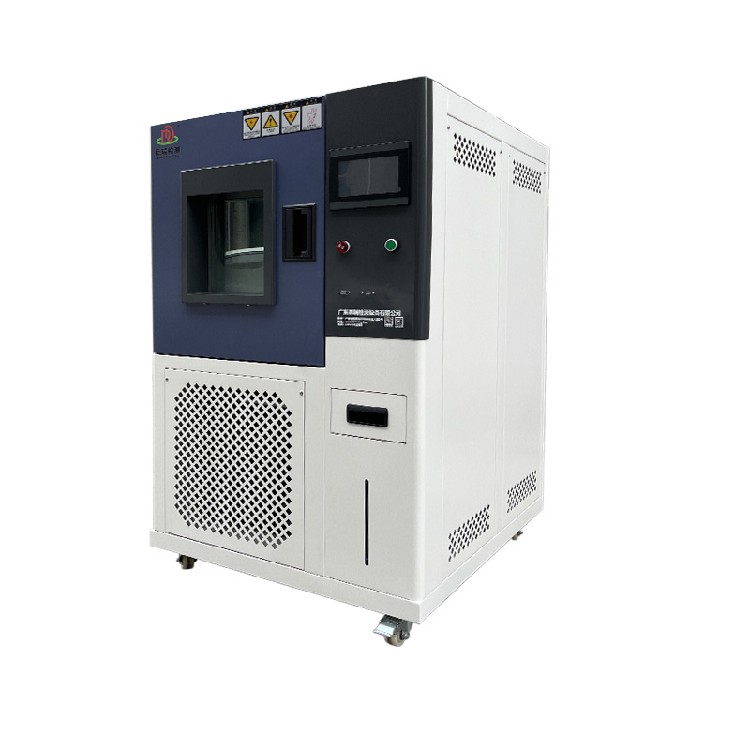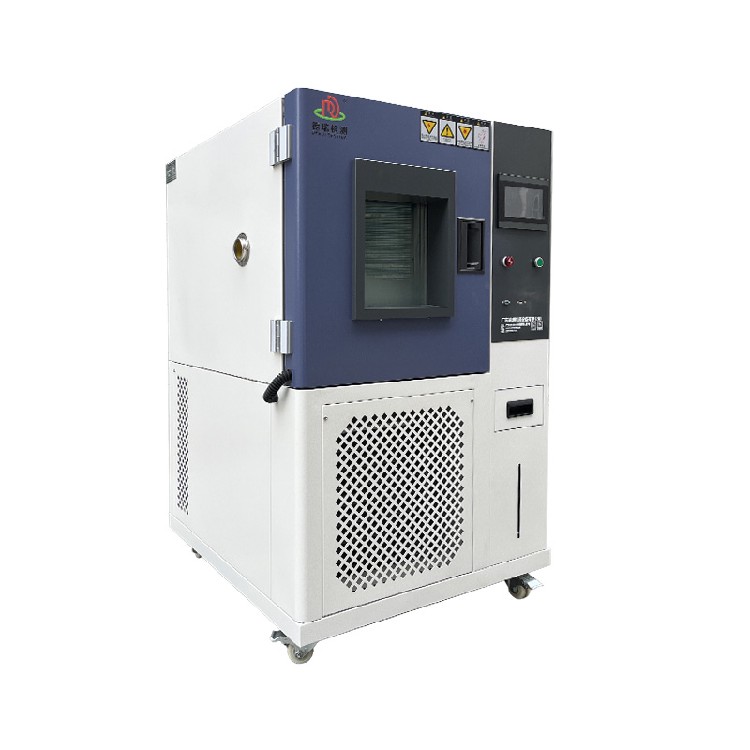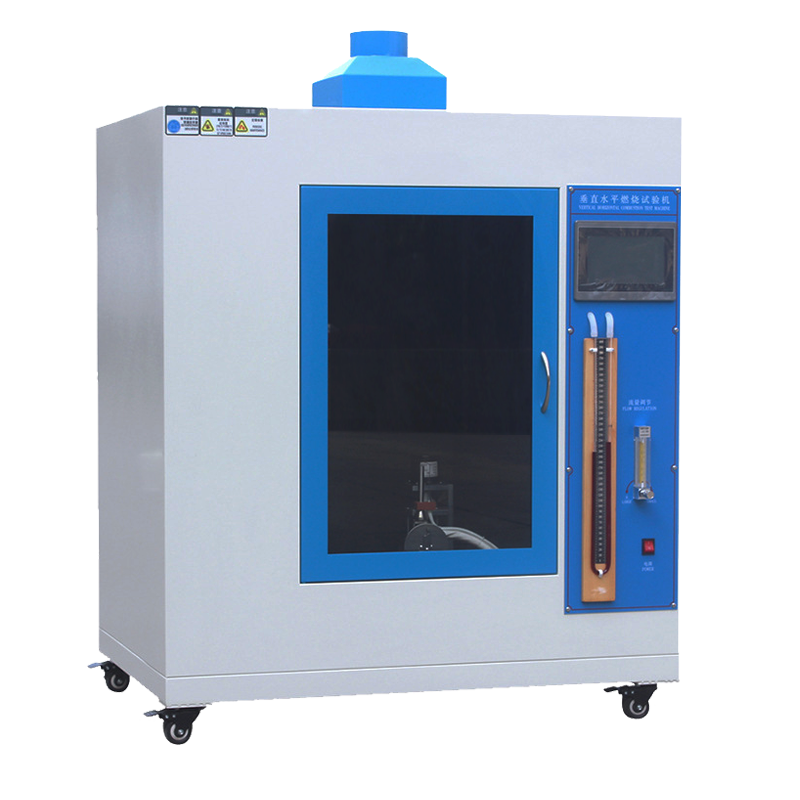Low Energy Consumption humidity testing chamber with Eco Mode
Product description
| Model | DR-H201-100 | DR-H201-150 | DR-H201-225 | DR-H201-408 | DR-H201-1000 | |
| Internal Dimension (W*H*D) | 400*500*500mm | 500*500*600mm | 500*750*600mm | 600*850*800mm | 1000*1000*800mm | |
| External Dimension (sus Type) (W*H*D) | 950*1400*1100mm | 1100*1500*1100mm | 1100*1670*1200mm | 1200*1770*1400mm | 1550*2100*1400mm | |
| External Dimension (paint Type) (W*H*D) | 700*1400*1100mm | 800*1500*1100mm | 800*1670*1200mm | 900*1770*1400mm | 1550*2100*1400mm | |
| Temperature(℃) | -20/-40/-70 | |||||
| Total Power (KW) | 4.5/4.5/6.5 | 5/5/6.5 | 9.5/9.5/11.6 | 9.5/9.5/11.6 | 17/17/21.5 | |
| Maximum Current (A) | 25/25/32 | 32/32/40 | 25/32/40 | 32 | 50/50/60 | |
| Voltage (A) | Sigle Phase 220V | Three Phase 380V | ||||
| Performane | Temp.& Humi. Adjust Way | Balanced temperature and humidity control (BTHC) PID intelligent adjustment | ||||
| Temperature Range | -20℃,-40℃,-70℃~150℃ | |||||
| Temperature Accuracy | 0.01℃ | |||||
| Temperature Tolerance | ≤±1.0℃或±2.0℃ | |||||
| Temperature Fluctuations | ≤±0.5℃ (without load and temperature stable) | |||||
| Temperature Uniformity | ≤1.5℃ (without loading), 50mm≤SENSOR | |||||
| Humidity Range | 20%-98%RH | |||||
| Humidity Accuracy | 0.1%RH | |||||
| Humidity Tolerance | 1 、≥75%RH:≤±3%RH ;2 、≤75%RH :≤±6%RH | |||||
| Humidity Fluctuations | ≤±2.5%RH | |||||
| Heating Rate | 3℃/min in average | |||||
| Cooling Rate | 1℃/min in average | |||||
| Regulator | Cooling Method | Single stage compression, two stage compression | ||||
| Refrigerator | Hermertically Sealed France Tecumseh Compressor or Semi-hermetic BOcK Compressor | |||||
| Cooling Method | Air-cooled | |||||
| Controller | Operation Panel | Programmable LCD Touch Screen | ||||
| Running Mode | Fix Running, Pattern Running | |||||
| Program Memory Capacity | 120 Group Programmable, Max 100 Section Each | |||||
| Output | Rs-232 (USB,Optional) | |||||
| Water Sup | Water Supply | Circulating Water | ||||
| Water Tank Capacity | Chamber Internal Capacity < 800L: 25L X 1pc | |||||
| Chamber Internal Capacity > 800L: 25LX 2pc | ||||||
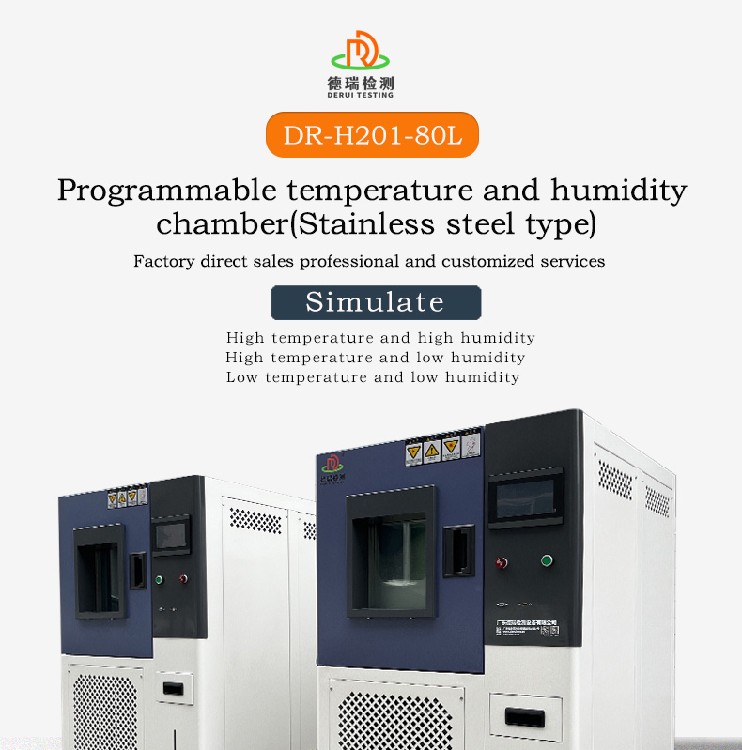
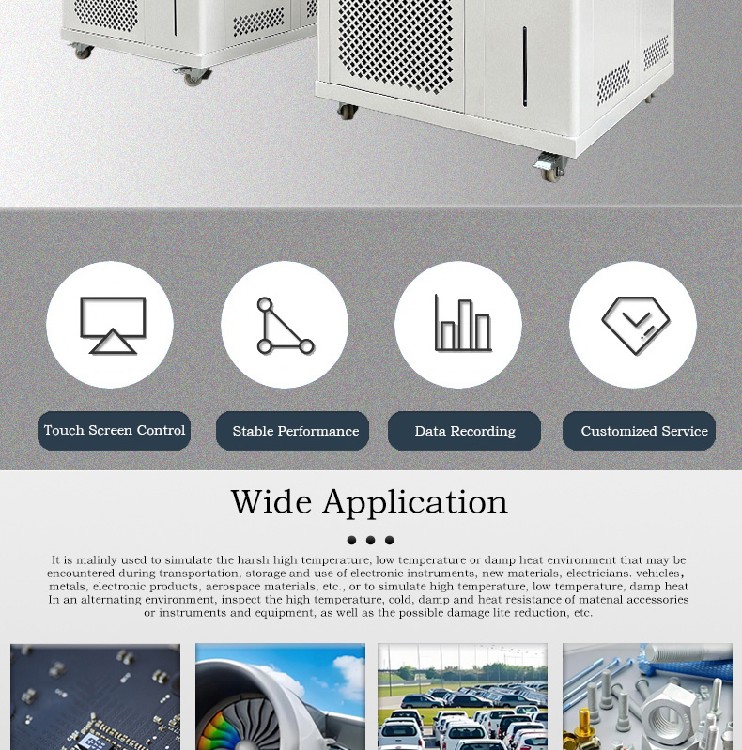

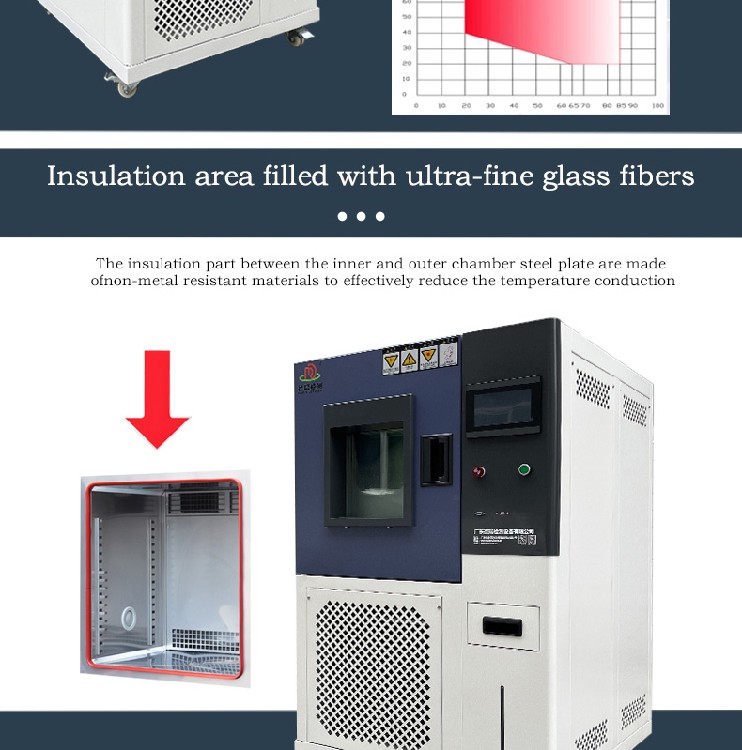
Low Energy Consumption Humidity Testing Chamber with Eco Mode
In an era where sustainability and energy efficiency are becoming increasingly important considerations across various industries, the Low Energy Consumption Humidity Testing Chamber with Eco Mode stands out as a revolutionary solution. This innovative device not only provides accurate and reliable humidity testing but also emphasizes environmental responsibility by minimizing energy usage. Let's explore the key features, applications, and benefits of this remarkable testing chamber.
The Significance of Low Energy Consumption in Humidity Testing
1. Reducing Operational Costs
Traditional humidity testing chambers often consume a significant amount of energy, leading to high operational costs over time. In industries such as manufacturing, where testing volumes can be substantial, these costs can add up quickly. A low energy consumption chamber helps mitigate this issue by reducing the amount of electricity required to maintain the desired environmental conditions, resulting in substantial cost savings.
2. Environmental Sustainability
As the world focuses on reducing carbon emissions and combating climate change, the environmental impact of industrial processes is coming under increased scrutiny. By choosing a humidity testing chamber with low energy consumption and an Eco Mode, companies can demonstrate their commitment to sustainability. This not only benefits the environment but also enhances their corporate social responsibility profile, which can be a key differentiator in today's competitive market.
Key Features of the Low Energy Consumption Humidity Testing Chamber
1. Advanced Energy-Efficient Cooling and Heating Systems
• High-Efficiency Compressors: The chamber is equipped with state-of-the-art compressors that are designed to operate with maximum efficiency. These compressors use advanced technologies such as variable frequency drives to adjust their speed and power consumption based on the actual load requirements. This ensures that the cooling and heating processes are optimized, reducing energy waste.
• Smart Thermostatic Control: The chamber's control system continuously monitors the internal temperature and humidity levels and adjusts the heating and cooling elements accordingly. By maintaining precise control, the system avoids unnecessary energy consumption caused by overcompensation or frequent cycling of the components.
2. Eco Mode - Intelligent Energy Optimization
• Dynamic Load Detection: The Eco Mode feature utilizes intelligent sensors to detect the current load on the chamber. When the load is low, it can automatically adjust the operating parameters to reduce energy usage. For example, it may lower the fan speed or reduce the power output of the heating and cooling systems without compromising the accuracy of the test results.
• Standby Energy Savings: In addition to real-time adjustments, the chamber enters a low-power standby mode when it is not in active use. This minimizes energy consumption during periods of inactivity, such as between test runs or during maintenance.
3. Insulated Chamber Design
• High-Quality Insulation Materials: The chamber is constructed with advanced insulation materials that provide excellent thermal resistance. This helps to maintain a stable internal environment with minimal heat transfer between the inside and outside of the chamber. As a result, less energy is required to adjust and maintain the desired humidity and temperature levels.
4. Precise Humidity Control with Energy Efficiency
• Humidification and Dehumidification Systems: The chamber is equipped with highly efficient humidification and dehumidification systems that are optimized for energy savings. For example, the humidification system may use ultrasonic technology to generate fine water droplets with minimal energy input, while the dehumidification system employs advanced desiccant materials that have high moisture absorption capacity and low regeneration energy requirements.
• Closed-Loop Humidity Control: The chamber operates in a closed-loop system, where the humidity and temperature are continuously monitored and adjusted. This prevents energy waste caused by over-humidifying or dehumidifying the air and ensures that the desired conditions are maintained with the least amount of energy.
Applications of the Low Energy Consumption Humidity Testing Chamber
1. Electronics and Semiconductor Testing
In the electronics industry, the performance and reliability of microchips, circuit boards, and other components can be significantly affected by humidity. The low energy consumption chamber allows manufacturers to accurately simulate and test the effects of different humidity levels on their products in an energy-efficient manner. This helps ensure the quality and reliability of electronic devices, while also reducing the energy footprint of the testing process.
2. Pharmaceutical and Biotechnology Research
Humidity plays a crucial role in the stability and efficacy of pharmaceutical and biological samples. Researchers can use the chamber to study the effects of humidity on formulations, packaging materials, and biological cultures. The low energy consumption design ensures that long-term testing can be conducted without incurring excessive energy costs, making it an ideal choice for research institutions and pharmaceutical companies.
3. Material Science and Testing
The chamber is also valuable for material scientists who need to evaluate the properties of materials under different humidity conditions. Whether it's testing the moisture absorption of polymers, the corrosion resistance of metals, or the hygroscopic behavior of natural fibers, the ability to precisely control and measure humidity while minimizing energy consumption is a key advantage.
Recommended products
